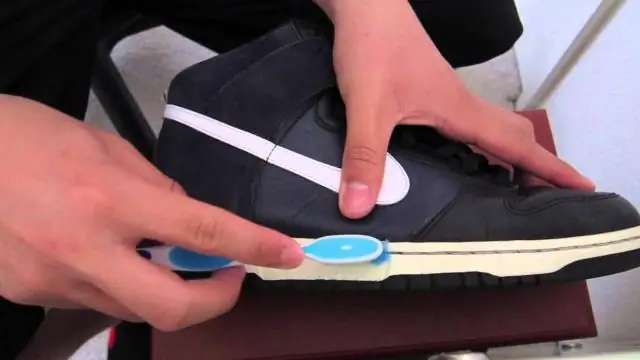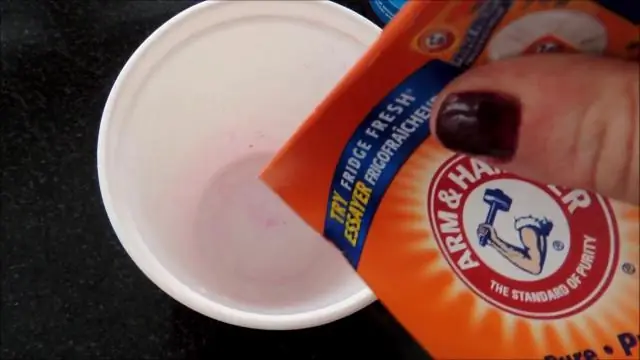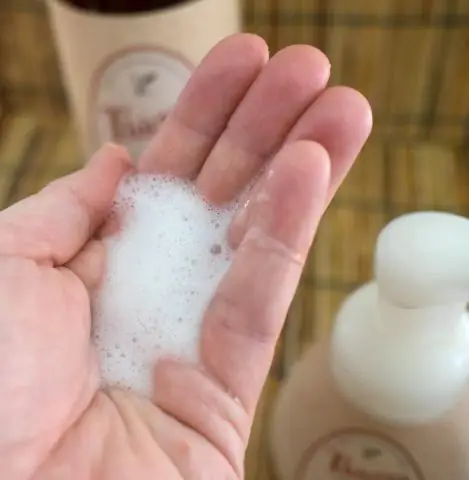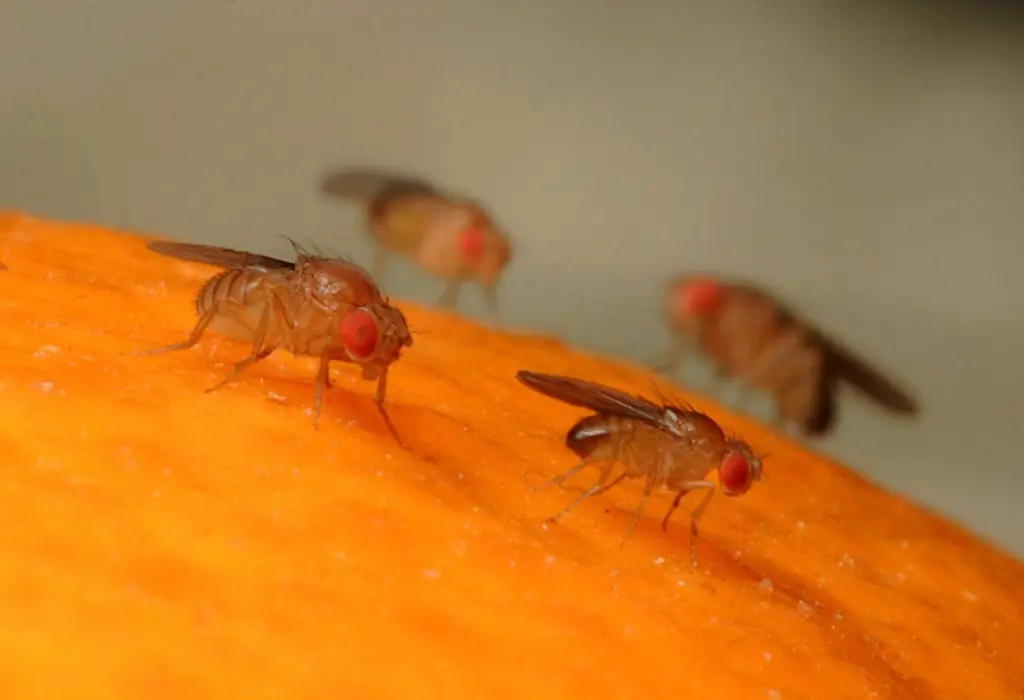
Table of contents:
- Author Bailey Albertson [email protected].
- Public 2024-01-17 22:26.
- Last modified 2025-06-01 07:32.
Saving a kitchen hood from grease and soot

The cooker hood, by taking the brunt of the fight against grease and soot, helps us maintain a clean and fresh scent. But at the same time, fatty vapor deposited inside and on the surface can make it difficult for its perfect operation. And the housewives will add hassle when cleaning household appliances. To paraphrase the well-known saying: if you love to cook, love to wash the hood too.
Content
- 1 Time to wash the hood
-
2 What you need to know before starting cleaning
2.1 Photo gallery: types of kitchen hoods
-
3 Step by step cleaning instructions
- 3.1 Photo gallery: disassembly of the cooker hood for general cleaning (steps 2-6)
- 3.2 Video: cleaning the hood with complete disassembly
-
4 Features of washing different materials
4.1 Video: three ways to clean the hood mesh
-
5 Methods for removing dirt and grease
- 5.1 Chemical compositions
- 5.2 Folk recipes
- 5.3 Video: Comparing Two Cleaning Products
- 6 Prohibited Techniques
- 7 Reviews
Time to wash the hood
Keeping the kitchen clean is a process the frequency of which each housewife chooses herself. Someone washes everything "from and to" every day, while someone is limited to the daily washing of dishes, and the general cleaning is carried out once a quarter.
Indeed, not all things in the kitchen require daily cleaning, and the range hood is one of them. However, you need to understand when it is time to wash the hood and with what regularity you should do it, so that you do not waste a lot of time and energy later on cleaning old dirt:
- if you cook often enough using the hood, then the filter should be cleaned at least once every two weeks;
- if the intensity of cooking is not very high, then cleaning once a month is sufficient.
If traces of dirt are visible on the outside of the exhaust surface, the filter is covered with grease ahead of time, and odors are poorly eroded from the kitchen, then it's time to start cleaning without waiting for the allotted time.

Not all things in the kitchen require daily cleaning.
But in any case, do not forget to do general cleaning of the hood at least once a quarter, washing all its component parts.
What you need to know before starting cleaning
Depending on the design and mounting method, the following types of hoods are distinguished:
- built-in - built into the kitchen cabinet, takes up little space and harmoniously fits into the space. Externally less contaminated, because it is hidden in the closet;
- suspended (horizontal and vertical) - the most affordable option for the price, it is distinguished by its simplicity of design and fastening to the wall or ceiling;
- island - found in large kitchens, when the area allows you to place the hob of the table in the middle of the room and mount a hood above it;
- dome (chimney) is a common type of hood, which outwardly resembles a roof canopy with a pipe. It is most difficult to clean, since dust and dirt settle on both the visor and the duct pipe.
Photo gallery: types of kitchen hoods
-

Built-in hood -
Built-in cooker hood - beautiful and practical
-

Suspended cooker hood - Suspended hood - budget and democratic
-

Island hood - Island hood - chic and scope
-

Dome hood - Dome hood - traditional and functional
Depending on the operating mode, a distinction is made between:
- recirculation hoods - provide air purification due to the filtration system. Both reusable and disposable filters can be used and must be periodically replaced;
- flow-through - purify the air and remove it outside using an air duct. Unlike recirculating ones, they better eliminate odors, but are more difficult to maintain, since they require periodic cleaning not only of filters, but also of the air duct.
Built-in and suspended hoods, as a rule, have a recirculation mode. The main difference is that suspended filters have reusable budget filters, and built-in ones are most often equipped with disposable carbon filters.
Island and dome can operate in both flow ventilation and recirculation mode. But to use the first mode, it is necessary to build an air duct.
Step-by-step cleaning instructions
First of all, you need to read the instructions, having studied the design of the hood, the rules for disassembly and assembly.
Regardless of the type of hood, the preparation process for regular filter cleaning includes the following steps:
-
Disconnect from the mains - the device is an electrical device, therefore safety precautions must be observed.

Disconnecting the hood from the network It is simply necessary to de-energize the hood to avoid electric shock
-
Unclip the decorative panel lock (if present) and remove the grease filter (mesh).

Removing the grease filter The grease filter is the dirtiest place in the device
-
Remove the air or charcoal filter (if available).

Removal and installation of the carbon filter Untimely replacement of carbon filters reduces the performance of the cooker hood
-
Replace the carbon filters with new ones.

Types of carbon filters Charcoal and air filters can be of very different configurations
- Reassemble the parts in reverse order after the mesh and grate have been washed and the filter replaced.
For general cleaning, you will need to additionally disassemble the hood as much as possible:
- The first three points are the same as those indicated for regular filter cleaning.
- If the configuration of the hood provides for the presence of an air duct pipe and it is possible to disassemble it, then the pipe is removed - it also needs cleaning.
- For ease of parsing, it is better to remove the hood from the mounts to the cabinet, wall or ceiling.
- Remove the hood cover (if present) by unscrewing the screws to reach the inside of the device.
- Remove the fan cover depending on the mounting method.
- It is necessary to get to the motor at least once a year - it also needs maintenance.
- Collect parts after they have been cleaned and dried.
Photo gallery: disassembling a cooker hood for general cleaning (steps 2-6)
-

Cleaning the duct - If the air duct is non-separable, then over time it is better to replace it
-

Removing the hood - Before starting a major cleaning, you need to disconnect all parts of the hood
-

Unscrewing the cover - When unscrewing the bolts, fold them carefully so as not to lose
-

Removing the fan cover - A motor is hidden behind the fan cover
-

Cleaning the motor - There are connecting wires near the motor - be careful not to damage anything
Video: cleaning the hood with complete disassembly
Features of washing different materials
The main components of the hood:
- top cover or cap,
- air duct,
- fan,
- grease filters,
- motor,
- body.
A large amount of grease and dirt accumulates on the top of the hood, so the surface is treated with one of the means for removing grease from the stove and cleaned with a sponge. To avoid streaks, wipe the clean surface dry. Wipe stainless steel lengthwise to avoid streaking.
The duct is a corrugated tube that is usually made of aluminum, stainless steel, or plastic. Plastic is easier to clean, since less dirt adheres to such a surface, and grease does not accumulate in the recesses. To clean the air duct, rinse it with water, having previously soaked it in a solution using a degreasing agent.

Degreasing agents are suitable for cleaning the duct.
Dirt particles also accumulate on the fan cover, so it must be removed and washed, if necessary soaked in soapy water.
The hood body also needs processing. Light dirt can be removed with a dish detergent, then rinsed with warm water and wiped dry.
The motor is the heart of the hood, so it must be cleaned at least once a year. It is better for a specialist to do this, but you can do it yourself. It is necessary to unscrew all removable parts and wipe them with a cloth moistened with alcohol. Next, lubricate the inner bearing with machine oil.
The main protector in the fight against grease and soot is the filter. He takes on the bulk of the pollution. But cleaning it up is not so difficult if you know a few tricks and tricks.
The following types of these accessories are used in modern hoods:
-
the grease filter (mesh and grate), which cleans from drops of grease and other impurities, is most often metal, therefore it is easy to clean, including in dishwashers. However, there are also disposable models that are made of synthetic fabric, do not require cleaning, but are subject to regular replacement (about once every 2-3 months);

Hood grease filters Reusable extractor grease filters are washable
-
a carbon filter that removes unpleasant odors. The basis is activated carbon in the form of a fine powder. An integral part of recirculation hoods does not need cleaning, but requires timely replacement after 3-12 months (depending on the period specified by the manufacturer).

Carbon filters for hoods Hood charcoal filters must be replaced regularly
The easiest way to clean the mesh and grate is to immerse the filter in a container and fill it with hot salt water, leaving it for half an hour. Alternatively, apply a grease-dissolving detergent and use a brush to clean the grate and mesh. However, these methods are effective in the case of light contamination and are more suitable for regular use.
Video: three ways to clean the hood mesh
When all parts are cleaned, they must be thoroughly rinsed and dried.
Methods for removing dirt and grease
At the hardware store, you can find grease and grime removers in every price point.
Chemical compositions
The most effective of these are Cinderella Anti-Grease and Synergetic Cleaner, which can be used on any surface since they do not contain harsh chemicals.
Domestos spray, Economy-Santry and Cif kitchen cleaner are also versatile products for removing grease stains from all surfaces, however, they may not clean too old stains of grease and soot.
Cilit Bang Anti-grease spray is used for cleaning plastic, glass, ceramic and enamel surfaces. A similar Mister Muscle kitchen spray is slightly less effective and should not be used on painted, aluminum, lacquered and wood items.
The application process for all of these products is similar: they are applied to a contaminated surface, then washed off with water. The difference is only in the exposure time: from 5 to 20 minutes, depending on the effectiveness. As with any household cleaning product, they require the use of gloves to protect the skin of the hands.
Folk recipes
If you decide to start washing the hood for the first time in the long service life of the device, and the ingrained fat does not want to succumb, then you can use the following recipes:
- based on soda - boil water in a large saucepan or baking sheet (so that the filter grill fits there), slowly add half a glass of soda to it, gently stirring until it is completely dissolved, then place the filter grill and boil for 30 minutes until all the dirt comes off. If the container is small and the entire grate does not fit, then one by one you need to turn the filter over so that all sides are in the solution, and then rinse it thoroughly;
-
on the basis of laundry soap - for 2.5 liters of hot water, rub 0.5 bar of soap and dissolve in water. Wipe all parts with this solution. Or, you can add a couple of tablespoons of soda to the resulting solution and boil the components of the hood for five minutes, then leave to soak for two hours;

Cleaned and dirty filters Using one of the methods or several at once, you will achieve amazing results.
- based on vinegar - mix vinegar with water in a 1: 2 ratio, moisten a rag with the resulting solution and wipe all contaminated areas, leave for 7-10 minutes, then rinse everything thoroughly with water. Acetic acid is very corrosive, be sure to use rubber gloves;
-
on the basis of lemon juice - peel a couple of lemons and cut in half, rub the oily areas with the pulp, leave for 5-10 minutes and rinse with a damp cloth, repeat the procedure if necessary;

Folk remedies for cleaning Every housewife has simple ingredients always at hand
- based on chemistry - pour the pipe cleaner into a closed sink or container (only made of stainless steel), place the filter in the agent with rubber gloves, rinse with water after the reaction. This method can cause damage to the metal, so it should be used only in the most advanced cases, no more than 1-2 times during the entire operation of the device.
Video: comparison of two cleaning products
Prohibited techniques
Do not forget that you must not clean the hood when it is connected to the mains. This is primarily dangerous for you, but the device may also fail.
Read the instructions carefully: if the manufacturer has not stated that it is possible to wash the parts of the hood in a dishwasher, then it is better not to do this.
It is important to know what material the hood parts are made of. Harsh chemicals can damage the aluminum, which can oxidize and darken the grate and mesh.
The adhered grease and dirt can be removed with a scraper; only plastic should be used for these purposes, since metal can damage the glossy coating or enamel surfaces. For the same reason, metal brushes and abrasive sponges cannot be used.

To clean the hood, use a rubber or plastic scraper.
Reviews
Don't wait for grease and dirt to turn into old growths. The main rule is regular grooming. No matter how designer the hood is, it is not just an interior decoration, but an irreplaceable kitchen assistant.
Recommended:
How To Bleach The Soles Of Sneakers, Clean Them On Sneakers Or Other Shoes, Wash Them To White Using Various Methods + Photos And Videos

Shoes with white soles (sneakers, sneakers, etc.) - how to clean them quickly and easily. How to preserve the result after cleaning and protect it from dirt
How To Bleach Linen At Home Using Soda, Hydrogen Peroxide, Aspirin And Other Means, Methods For White Clothes

How to bleach linen at home: traditional and folk methods, machine in the machine and hand wash. Tips for bleaching fabrics
How To Get Rid Of The Smell In A Multicooker And Clean It, Than To Wash Off Fat And Other Contaminants From The Parts Of The Appliance

How to properly wash all the details of a multicooker so as not to spoil them, and how they do not need to be washed. Multi-cooker mixes odors - how to get rid of them
How To Get Rid Of Small Midges In An Apartment Or House, In The Kitchen, Methods Of Dealing With Fruit Flies By Various Means + Photos And Videos

Small midges have started up in the house or apartment. How dangerous are they? How to get rid of them?
How To Remove Iodine From Clothes And Other Surfaces, Than To Wash It From The Skin, Various Methods And Means + Video And Photo

How to remove iodine from different fabrics, wash stains from furniture, body and other surfaces. Effective ways with instructions for use with photos and videos
